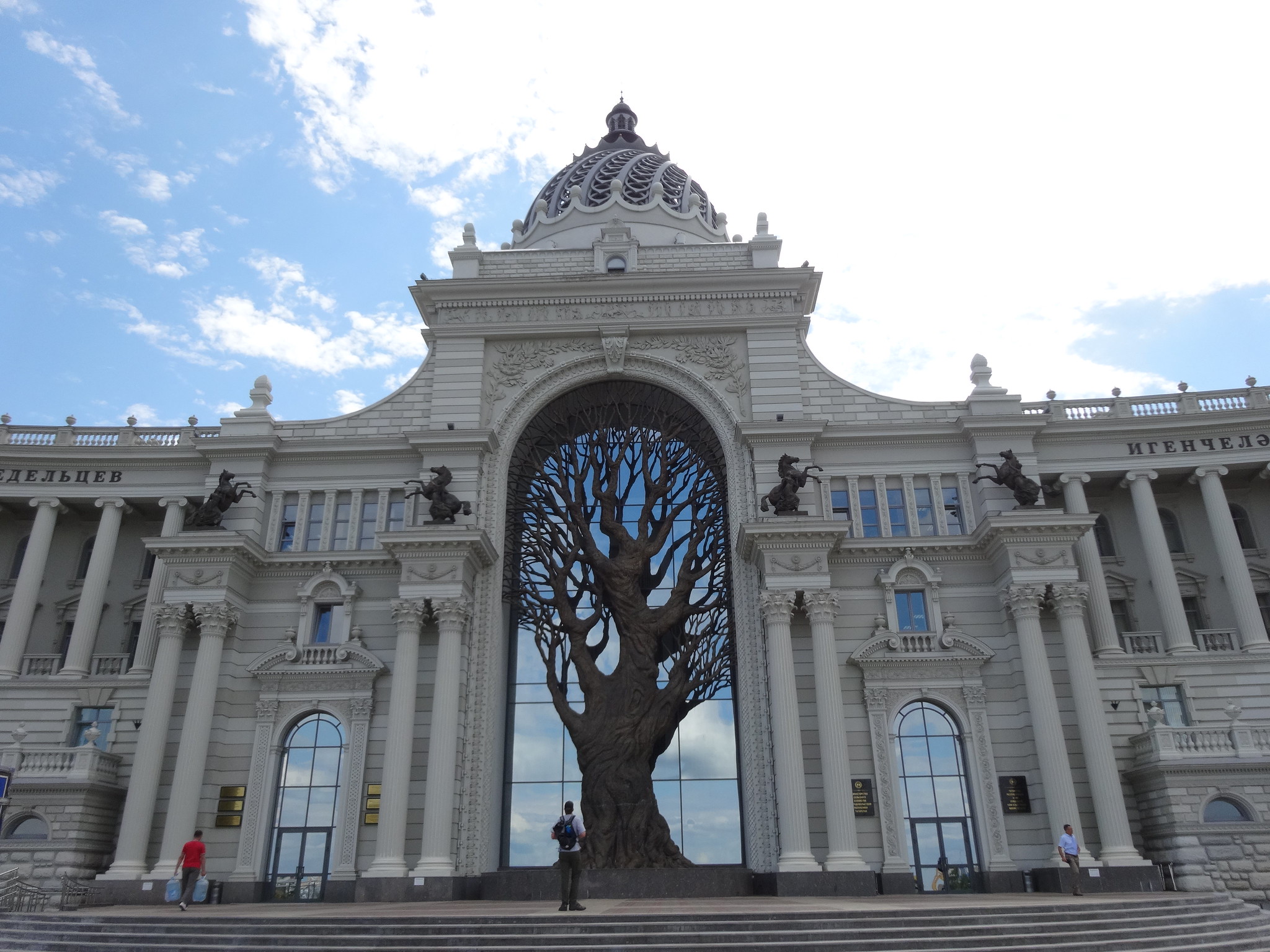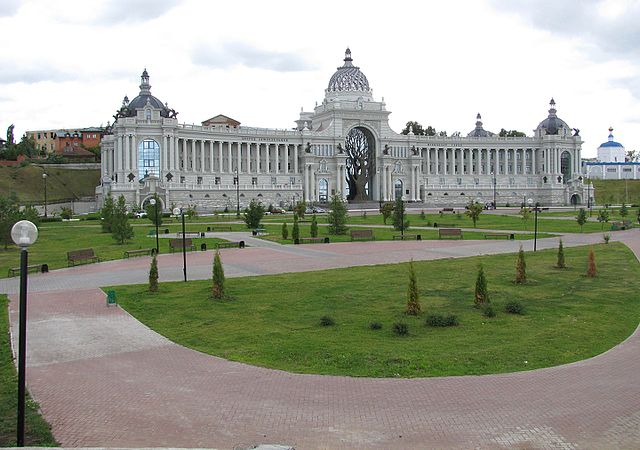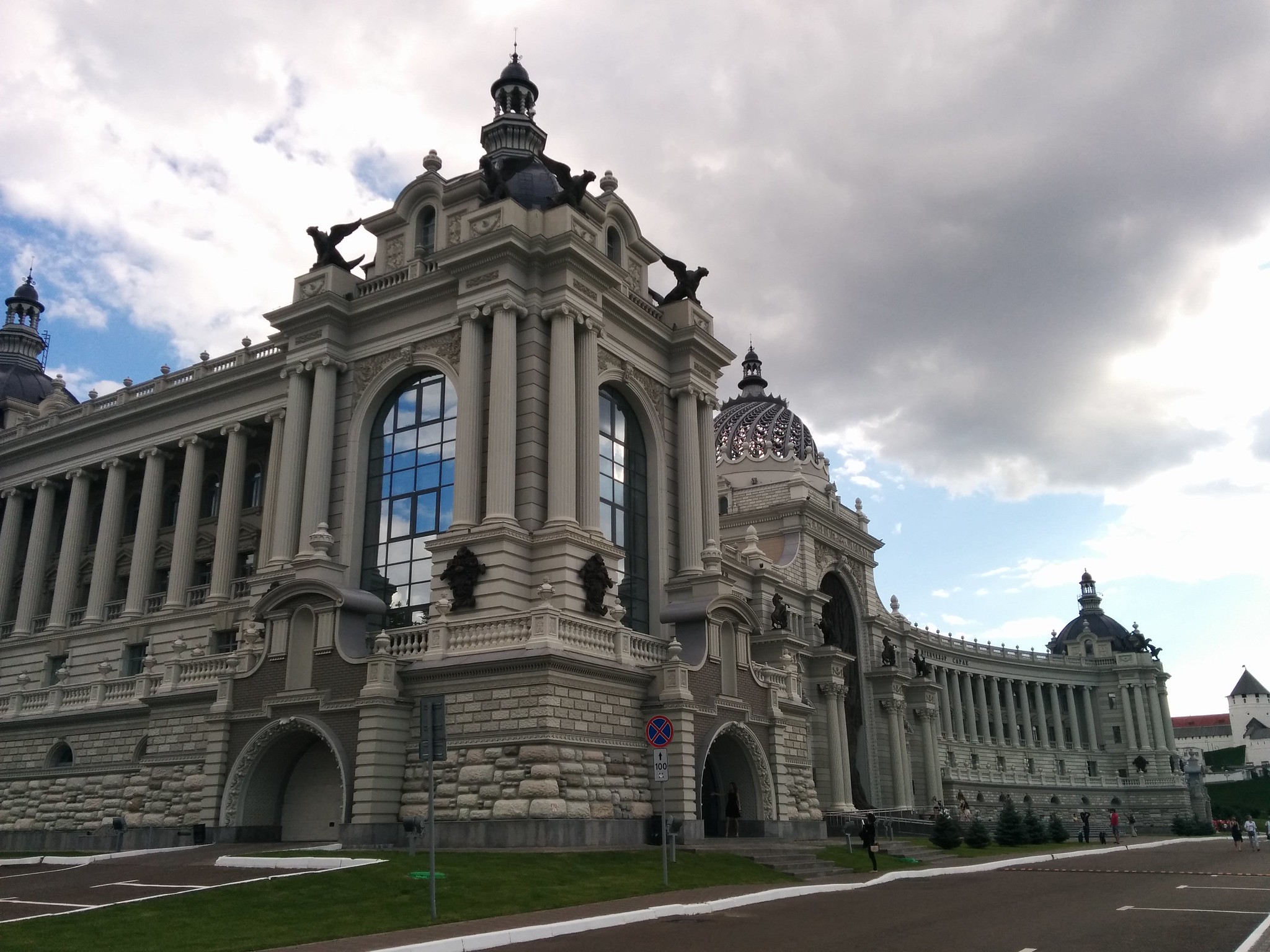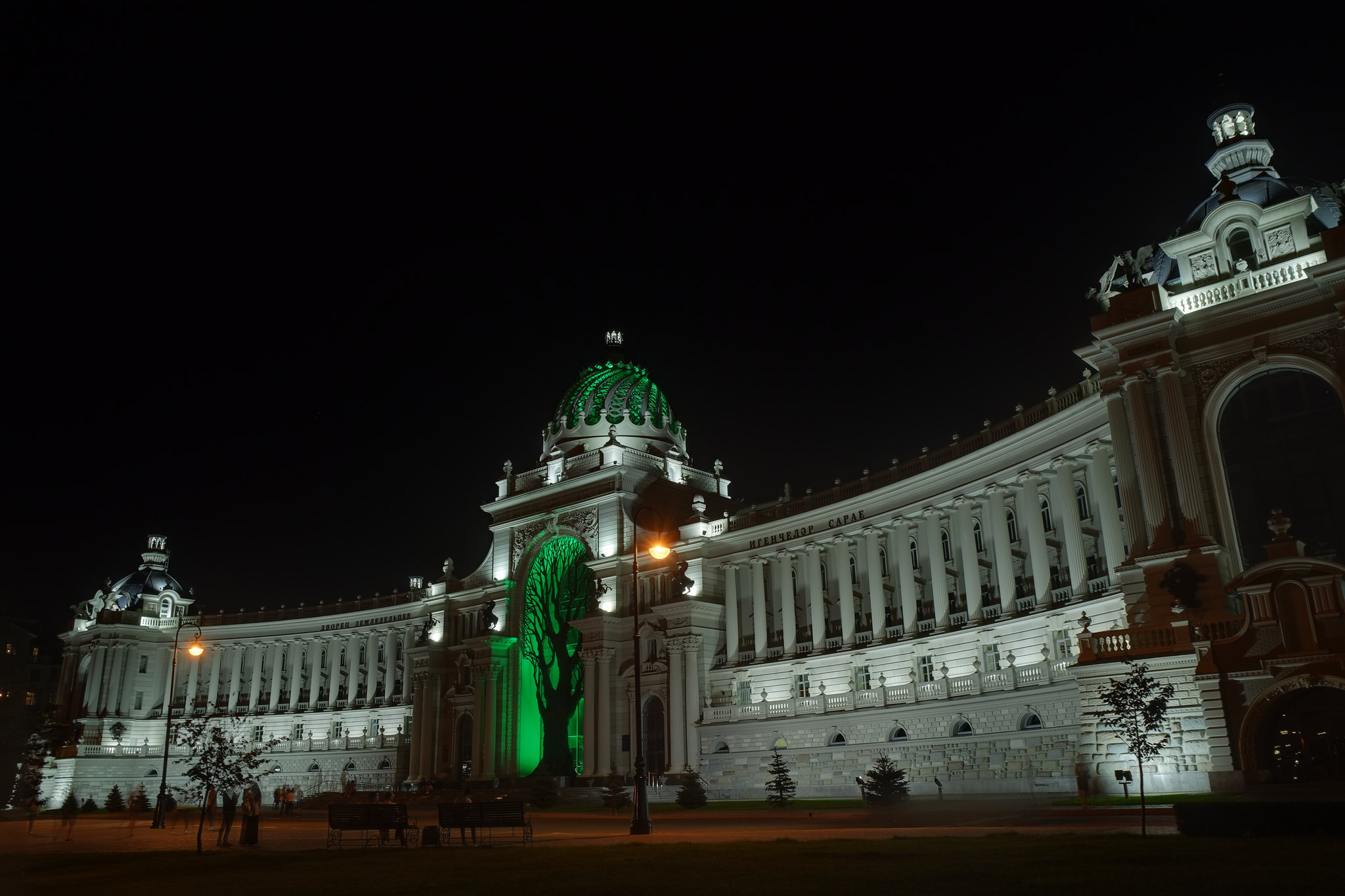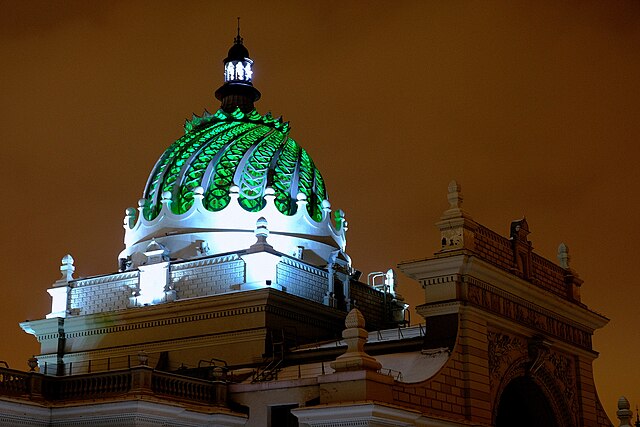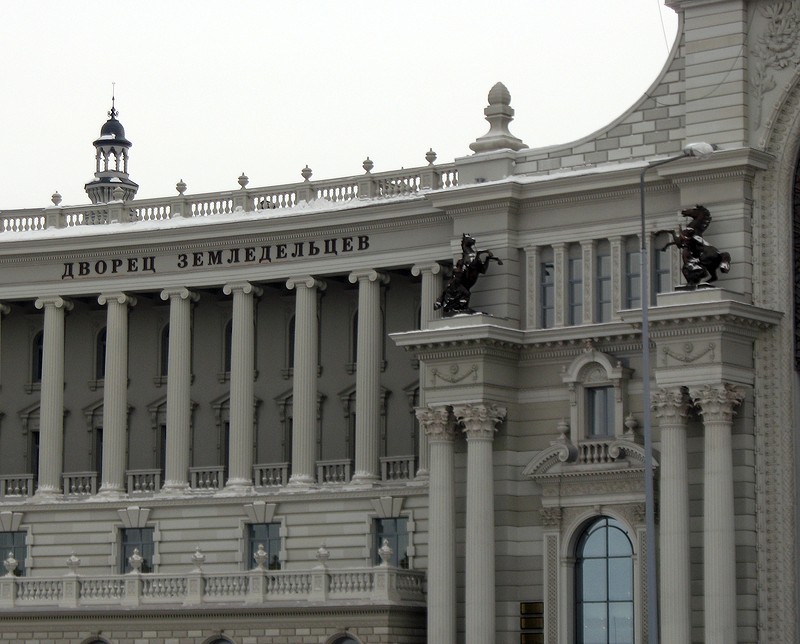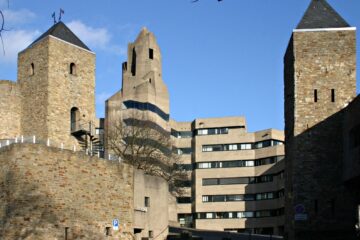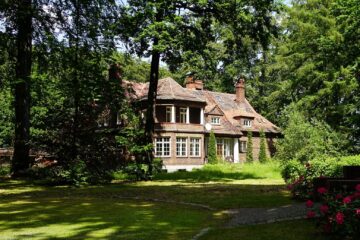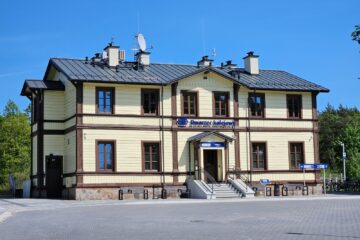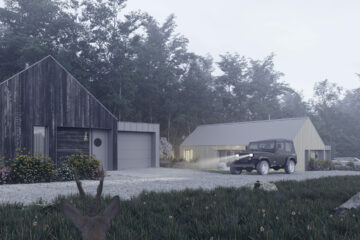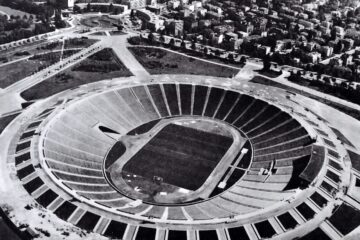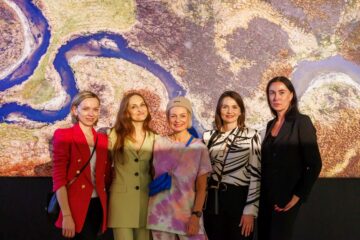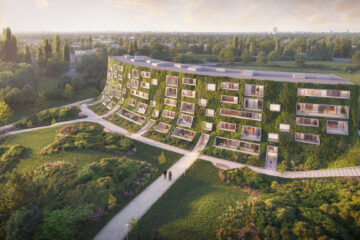The palace of the Tatarstan Ministry of Agriculture in Kazan looks as if it was built in the time of Tsarist Russia. However, it was built in 2010. Architect Leonid Gornik combined neoclassicism with Art Nouveau floral motifs to achieve a ‘palatial’ effect. The building designed in this way has supporters and opponents. The historicist form is praised on tourist forums, while comments on other sites are critical. What do whiteMAD readers think of the building? We have included a poll below the article.
The palace was designed in just one month. The design was created by the Antica studio, which specialises in creating architecture inspired by historic buildings. In this case, the studio wanted the new building to fit in with the historic surroundings of the nearby Kazan Kremlin. Interestingly, the buildings of the hilltop castle (kremlin) in Kazan are listed as a UNESCO World Heritage Site. That is why the ministry’s palace has preserved the proportions of the façade, the monumental colonnade and the symbolic sculptures. The whole project was completed in just two years.
The building’s façade is dominated by a monumental colonnade. In the middle is a 20 m tall bronze tree. The sculpture is intended to symbolise the connection to nature of Tatarstan. Above the crown of the tree are bas-reliefs of olive branches, and Corinthian-style columns start on the sides of the tree. On the columns stand four sculptures of horses. This animal plays an important role in Tatar culture. Another important symbol of Tatarstan is the winged white panther. Sculptures depicting the mythical animal are placed on the sides of the building. From the front, the grand façade foreshadows the equally powerful side walls. However, it soon becomes apparent that from the side, the building is very short.
The entire building is topped with a dome that resembles a crown. It is decorated with a spiral pattern. At night, both the dome and the tree are illuminated with green light. The greenery, the tree and the plant ornaments are meant to evoke nature and the farmers who enjoy its benefits. For this reason, the building is also called the Farmers’ Palace.

Beautiful or kitsch?
Reviews of the palace on travel websites like Tripadvisor are largely positive. Tourists appreciate the monumentalism and the attempt to return to the old building. However, it is not without its critics. The Volga Federal District office issued a statement condemning the project. According to officials, the new building disturbed the layout of the historic part of the city, including the nearby Kremlin. To some extent, the palace was also condemned by many journalists and Kazan’s chief architect. The project was accused of kitsch, due to the tree set in the middle and the excessive mixing of styles.
However, over time, the idea of the Antica studio gained the approval of key politicians. The President of the Republic of Tatarstan, Rustam Minnichanov, expressed his support for the investment. The palace is part of the major investments made in the city after 2000. It is worth noting that Kazan is developing rapidly and is one of the best places to live in Russia.
The very subject of rebuilding historical buildings or creating new ones inspired by the past is controversial. Projects such as this one arouse a lot of emotions, and not always the right ones. The building eclectically combines many motifs, but does so on the edge of good taste. It is hard to unequivocally condemn the appearance of the building and the idea of promoting a style of architecture from centuries ago. An architecture focused on beauty and the sublime. Are elements such as artificial trees or bright green lighting, which are slightly kitsch, forgivable? Answer the poll:
Source: Antica
Read also: Palace | Architecture | Russia | Interesting facts | whiteMAD on Instagram

